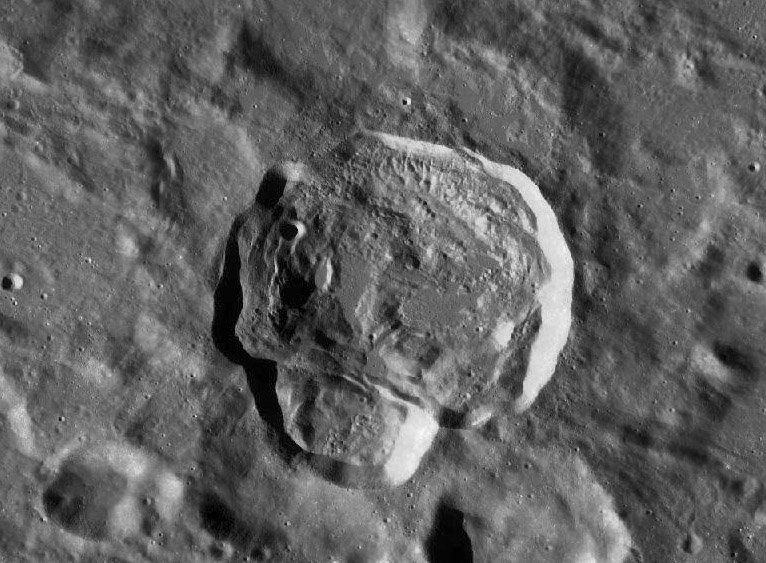October 24, 2023
Side-Squashed
Originally published October 9, 2013

LRO image by QuickMap (NASA/ASU)
In Gari's excellent image in yesterday's LPOD I mentioned that one undiscussed crater looked like there was a processing artifact - perhaps an error occurred when stitiching two images together so that two craters got an unnatural straight line join. The crater was Newcomb at top slightly left of center in Gari's image. An earlier image makes it look like that when Newcomb formed it cleanly sliced through an earlier crater. The view from LRO in today's LPOD shows what this odd feature looks like from overhead. The rim of Newcomb and the embayment at bottom, Newcomb A, have a continuous rim, suggesting that both formed at the same time. Impact melt ponds external to the crater seem to only be just beyond the north-northeast rim of Newcomb, exactly opposite to A. This is indicative of an oblique impact with the projectile coming from the south, southwest, first excavating A and then Newcomb itself, with melted rocks being thrown down range. I could not find any reference to Newcomb in the online literature (other than an LRO story about the external melts), but back in 1972 in his Moon Morphology book, one that qualifies for the word opus, Pete Schultz discussed the large scallop (Newcomb A) suggesting it was due to collapse, perhaps triggered by volcanism or tectonism. Ironically, Pete has been the leader in recogniing oblique impacts but 41 years ago that realization hadn't occured yet for craters like this. Hainzel A and C are a big sisters version of this; careful looking will unearth, or perhaps unmoon, more of them.
Chuck Wood
Related Links
21st Century Atlas chart 1.
Yesterday's LPOD: Too Far To Jump
Tomorrow's LPOD: Musings Inspired by a 4" Observation
COMMENTS?
Register, Log in, and join in the comments.



